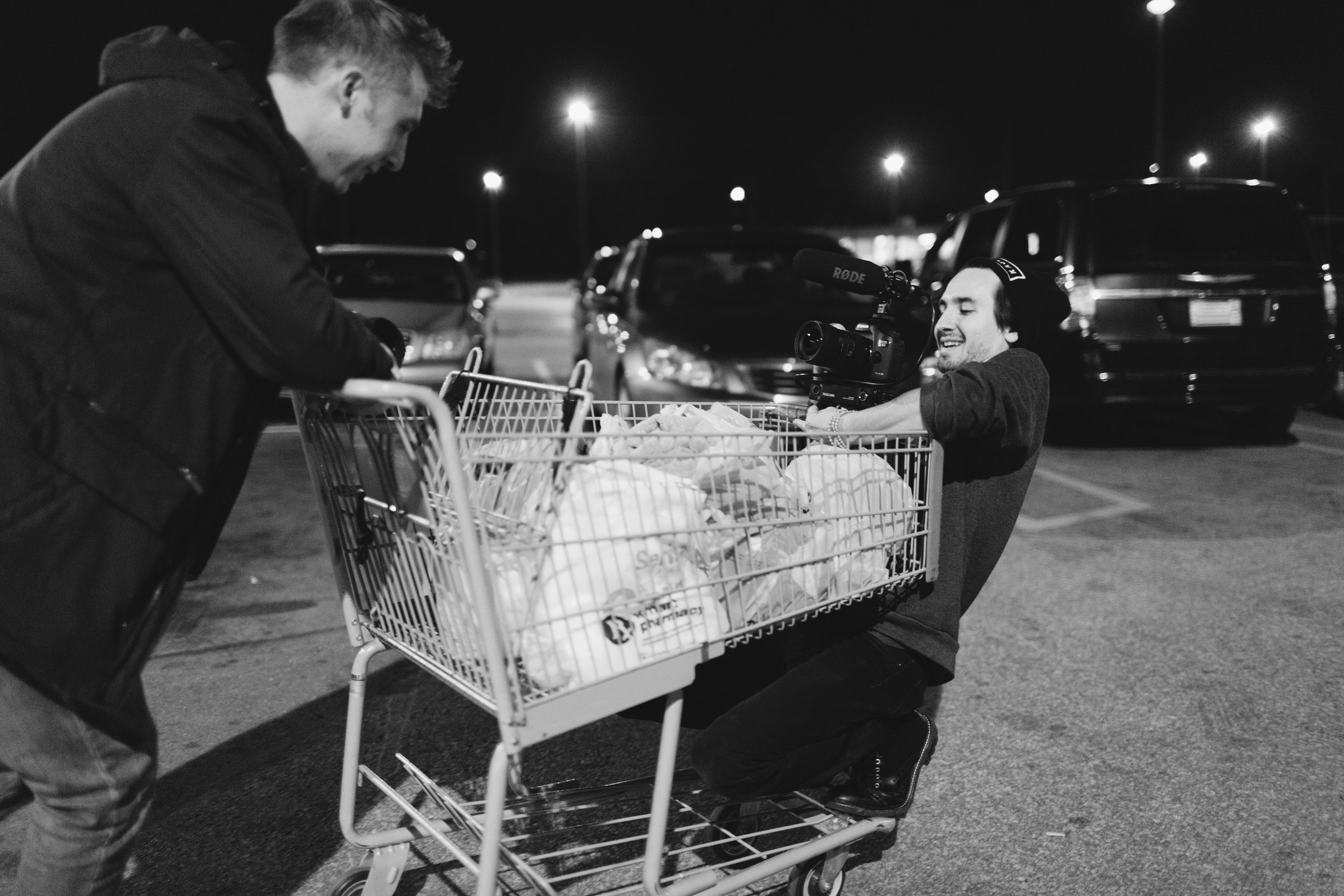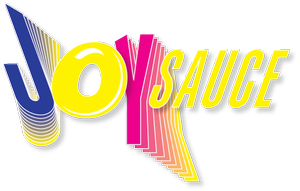Sean Kusanagi Digs Into the Subconscious of Filmmaking and Working With ODESZA
Mixed Asian Media - September, 19 2023
By Lauren Lola
Powered by JoySauce
Photo by Julian Bajsel
On July 7, the concert film ODESZA: The Last Goodbye Cinematic Experience had a limited release in theaters all over the world. Directed by Sean Kusanagi — who’s also the creative director of ODESZA, as well as their record label, Foreign Family Collective — the film gave viewers the chance to go in-depth into the lives of the duo, Clayton Knight and Harrison Mills, and their approach to putting on their first set of concerts in three years.
Three weeks later, over a Zoom call with Mixed Asian Media, Kusanagi expressed what a lucky experience it was to even have a film play in a theater, never mind over 720 of them. As a filmmaker and director, it allowed him the opportunity to show the concert to its fullest and most intricate extent — both for viewers who’ve never attended a live show before, and for concertgoers to experience in a whole new way through this film.
“You want to feel the scale and the grandioseness of this show,” he said, “and the next best place for that if you can't see it with your own eyes is live, is in a theater and on a big screen with a group of people all watching it together with the Dolby surround sound, and being able to really feel that immersiveness that you can really only get right now, without going to the show, in a theater.”
Kusanagi and his team accomplished that through first-person-view drones flying around the venue. Macro shots of the drumline, the choreography, and Mills and Knight playing provided a better look for attendees who may not have been able to see them clearly, possibly due to being far away from the stage.
“The show is so dense that it gave us a great opportunity to highlight a lot of those details that otherwise fans may have missed the first or second time around seeing the show live,” Kusanagi commented.
Photo by Jonathan Gipaya
Kusanagi’s journey in filmmaking can be traced back to high school and his lack of skill in skateboarding. The contrary could be said about his friends, and so to spend time with them, he would create little skateboard documentaries and movies by taking photos of them, and then later drag the pictures into PowerPoint and go slide by slide, stop-motion-style.
Really quickly, Kusanagi discovered how powerful the act of storytelling could be — whether he was telling other people’s stories or his own. Filmmaking was a medium he felt very comfortable in, especially after dealing with a lot of shyness and insecurity while growing up on Bainbridge Island, Washington.
“I was never really good with my words, so being able to bring together music, or visuals, or cinematography just felt like my way of communicating to the world,” he explained. “Especially as someone that was just very shy early on; when I was a kid, I was very shy. I'm half Japanese, so [I’m] coming from that background of maybe not understanding my heritage very much, and also coming from a place where I went to a school that was pretty white. So, it was me and three other Asian kids. I felt like an outcast, even though I was half. It still felt like, ‘Oh, I feel different.’ And so having this filmmaking way of communicating was what felt really authentic to me.”
Kusanagi went on to make a number of documentaries, such as the exploration of poverty in Guatemala in Living on One Dollar and the look into a Syrian refugee camp in Jordan in Salam Neighbor. He described the experience of making both films as eye-opening and said he realized just how tiny one’s own perspective can be: “Trying to just understand how we all come from such different backgrounds, and it all exists on this planet, which is pretty incredible.”
In the scheme of documentary filmmaking, Kusanagi specializes in immersive storytelling. It’s a more gradual approach to the genre that requires spending quality time with the subjects of the film, so that trust is formed in the story being handled appropriately. This was crucial when Kusanagi was filming Living on One Dollar and Salam Neighbor. “We spent pretty much the first month of both those trips just meeting people and getting to spend time with the community before we even pulled out a camera to film them,” he said. “It's such an intense thing to say, ‘Hey, here's a camera. Here's this crew. Now open up about the hardest things you've done in your life.’”
He pointed out how quickly people can form opinions about someone without taking the time to really know them. Through immersive storytelling, Kusanagi is able to dig beyond the surface and come to better understand the perspectives presented in the story he’s filming. This notably goes hand in hand with the making of The Last Goodbye Cinematic Experience. After all, he’s been filming Mills and Knight for the past 10 years.
Photo by Julian Bajsel
Kusanagi’s skill in immersive storytelling and history with ODESZA allowed for intimate moments in the documentary, such as whenever the duo talk about the difficulty they’ve been wrestling with in making music as of late, and when Mills talks on the phone with his mom about how one of the hardest times of her life was when her parents passed away.
It was a moment that brought Kusanagi and the producer to tears. He recalled, “It's those moments that you feel like you can be a fly on the wall listening to a conversation that is so beautiful. And Harrison's mom has such a great way with words, too. She's amazing. So that also helps.”
It's because of Kusanagi that Knight and Mills met. He was friends with Knight in high school and went to college with Mills, and in college he introduced the two of them. The duo made their first album as ODESZA, Summer’s Gone, with Kusanagi filming them along the way.
As the creative director of both ODESZA and their record label, his goal is to help artists realize the best way of putting their music out into the world and get their fans to resonate with it. He’ll strategize ways to give music more context to listeners, bring emotion out of them, or give them an emotional connection to the music. That can take the form of a music video or partnering with other artists. Sometimes, he’ll talk to artists about what a song means to them and the story they’re trying to tell with the music, which can lead to working with artists on their live shows and album campaigns.
Regarding music itself, Kusanagi considers it one of the most incredible art forms because it is so subconscious. He elaborated, “It becomes, very easily, the soundtrack to our lives, right? We get to experience music with these experiences in our life, whether we're driving on a road trip, or whether we're painting, or making coffee in the morning, right? We put on music to help give that moment gravitas. It can be this soundtrack to what we're doing. And that's so cool. It's not like watching a movie, where you're like, ‘I'm watching a movie.’ You can be driving through the redwoods and play a song. And it can be so life-changing, because it can be that soundtrack to a really important moment in our life, whether we're walking down an aisle at the grocery store, or we're walking down an aisle at a wedding, right? There's music there. And it gives it a moment.”
Photo by Julian Bajsel
Kusanagi has played such an important role in ODESZA that sometimes he’s referred to as the secret third member of the group. Asked for his thoughts on that, he was quick to mention the team of people behind the duo and how invested they are in working with everyone. He does, however, like to take credit for introducing Mills and Knight to each other.
“There's also a lot of times in the music industry that you can get surrounded by a bunch of yes people that just say, ‘Hey, everything's great.’ Just, ‘Yes. Yes. Yes,’” he explained. “Since we're such close friends, there's less ego, and we're all very honest and open with how we might feel about something.”
That gratitude and trust for one another was on full display in a poignant moment in The Last Goodbye Cinematic Experience when, following their first run-through of the lighting setup for the show, they all realized that it was not up to their standards. Everyone being candid without being critical and receptive of feedback led to them putting in the work to get it to where they wanted it to be — with two weeks to spare before the first concert.
The seventh track on ODESZA’s sophomore album, In Return, is called “Kusanagi.” Opening with guitar chords played by Kusanagi himself, it’s a much slower, calmer track compared to their other songs; so much to where Kusanagi has received messages from fans about how they’ve walked down the aisle to that song or how they turn to it when they want peace following a hectic day.
He actually had no idea it would be called “Kusanagi” until the album came out. Hearing the feedback from listeners, he sees the song as a reason for why an artist or creator gets up every day and makes more.
Going forward, Kusanagi hopes he, ODESZA, and the rest of the team continue to have audiences who care about what they do. He realizes that it may sounds like a simple and cliché goal, but as he emphasized, “Nowadays, in the chaos of the internet and the chaos of social media, to be able to put out a 90-minute film and have people pay attention to the whole thing, and have an emotional reaction, and sit there in one spot, and watch it, and have people be moved is the dream. They're getting to see your work and be affected by it. It's the same thing with the ‘Kusanagi’ song. It's having an audience that cares about what you do. And what you get to make is truly from the heart.”
“As long as I'm doing something like that in the future,” he said, “I think, whether it's to two people or whether it's to thousands, I'll be very, very happy.”
Lauren Lola is an author, freelance writer, playwright, and screenwriter from the San Francisco Bay Area. She is the author of the novels, An Absolute Mind and A Moment’s Worth, as well as the upcoming graphic novel, Dasig. She has written plays that have been produced both virtually and in-person for theatre groups on the West Coast of the United States, and has penned the short films, “Breath of Writing” and “Interview with an Aswang.” Aside from Mixed Asian Media, Lauren has also had writing featured on The Nerds of Color, CAAMedia, PBS, YOMYOMF, and other outlets and publications.
You can find Lauren on Twitter and Instagram @akolaurenlola and on her website, www.lolabythebay.wordpress.com.
JoySauce is a multimedia network dedicated to celebrating the full spectrum of Asian American and Pacific Islander narratives. The site boasts a vibrant library of content around entertainment, lifestyle, food, travel, culture, relationships, art, and education in the form of exciting new streaming shows, movies, standup comedy, provocative podcasts, and a suite of editorial updated daily.





